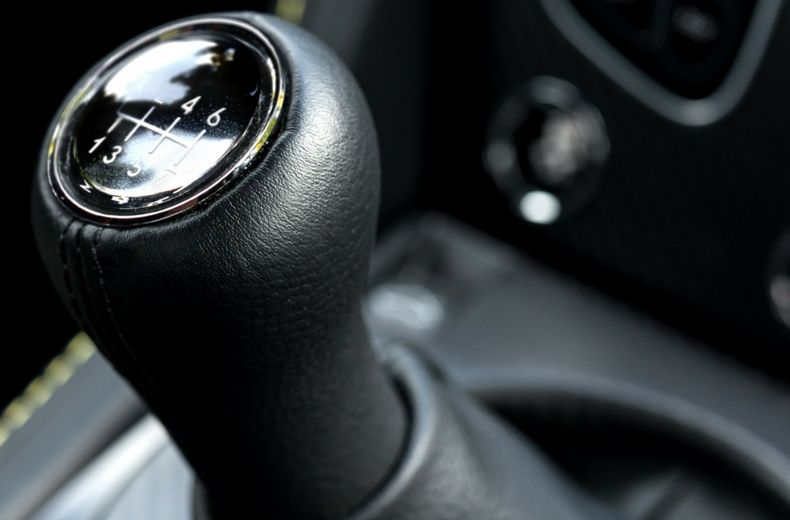
Before you start
Typically, manual cars will have three pedals: clutch, brake and accelerator (in that order, left to right).
The brake and accelerator pedals are pretty simple – press the brake to slow down (the firmer you press it, the quicker you’ll lose speed), while using the accelerator increases the engine’s revs and causes you to speed up (the firmer you press it, the quicker you will speed up).
The clutch pedal is the one that makes driving a manual car more difficult than an auto.
Without going into too much detail, the clutch is essentially two metal plates that connect the engine to the drive wheels.
So by pressing down on the clutch pedal, you’re disconnecting the engine from the wheels.
- Get in the car and put on your seatbelt
- Put the key in the ignition and turn all the way until the engine starts
- Put the clutch pedal down (this the pedal on the left)
- Move the gear stick into first gear
- Use your right foot to press down on the accelerator gently to increase the engine’s revs very slightly
- Slowly lift the clutch pedal using your left foot until it starts to vibrate gently
- This vibration is known as the car’s “bite point” – this is where the clutch plates start to come together.
- Remove the handbrake and the car should start to move slowly
- Increase the revs while slowly raising your foot off the clutch unit you are moving forward with only the use of the accelerator pedal
Remember – if you’re too quick lifting your foot off the clutch, or don’t give it enough revs, the car will stall: that’s where the engine cuts out and the red lights glow on the dashboard.
If you stall apply the brakes, turn the engine off, return the gear stick to neutral and begin the process again.
How to avoid damaging the clutch
Over time, you’ll get used to a car’s clutch and have a good understanding of where its bite point is, as well as how many revs you need to give it to move off.
It sounds complicated but you’ll develop a natural feel for it with practice.
If you’re not careful, though, it can be easy to wear the clutch out prematurely – and that’s likely to cost at least £300, rising well into four figures for some cars. Follow these tips and your clutch should easily last for well over 100,000 miles:
Don’t use the clutch to hold the car on hills or creep forward at junction
If you’re waiting at a junction, in traffic or at a roundabout, it’s tempting to hold the car at the clutch’s bite point, allowing you a quick getaway when you can move. But this can cause unnecessary wear, especially if you do it often.
Stop, put the handbrake on, and only use the clutch when you’re ready to pull away.
Don’t hold the clutch down when you’re stopped
Again, it’s tempting to leave your car in gear and keep your foot on the clutch when you’re stopped in traffic.
This puts a lot of pressure on the clutch release bearing, however, which could wear out quickly if you do it regularly.
Keep the revs to a minimum
To avoid stalling, especially during hilly manoeuvres, many drivers are too heavy with the accelerator.
This can cause unnecessary wear on the clutch plates.
You need a minimum amount of revs to get the car to move – and if you’re gentle enough, most cars can move without using the accelerator at all.
What are the advantages of manual gearboxes?
Whether you prefer manual or automatic gearboxes will come down to personal preference, but there are some clear advantages to driving a manual.
For a start, they’re generally cheaper to buy and better on fuel than automatics
There are a number of reasons for this – automatic gearboxes are usually heavier than manuals, and traditional torque-converter auto ’boxes would waste energy building the resistance of hydraulic fluid to transfer drive from the engine to the wheels.
Manual gearboxes are generally better for those who like to feel in control, too.
If you’re planning an overtake, for example, in a manual you can drop down a gear in advance for a quick reaction when you need the acceleration.
In an automatic, there might be slight hesitation when you floor the accelerator.
Today, many automatics come with manual or sport modes for this situation, however.
The same applies in poor conditions such as driving across a muddy field or in the snow.
An automatic gearbox might get confused and select the wrong gear, spinning the wheels or struggling to maintain momentum.
In a manual, you can select a higher gear to increase torque, or slow down using the gears rather than the brakes, helping the driver remain in control.

